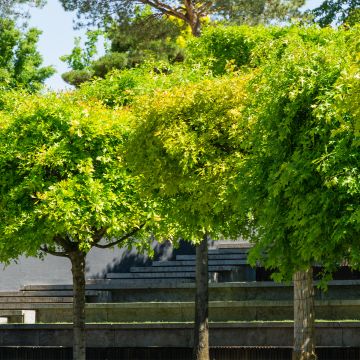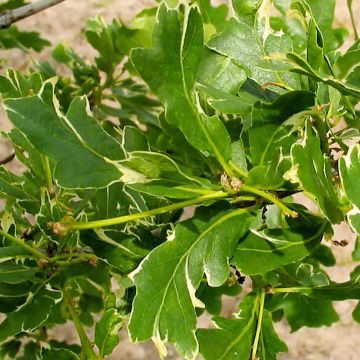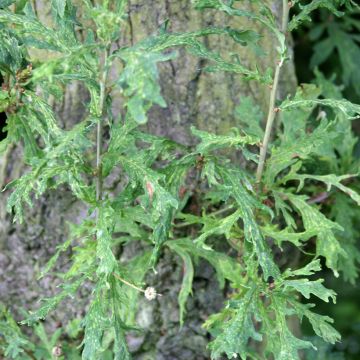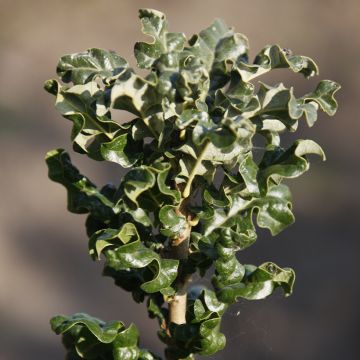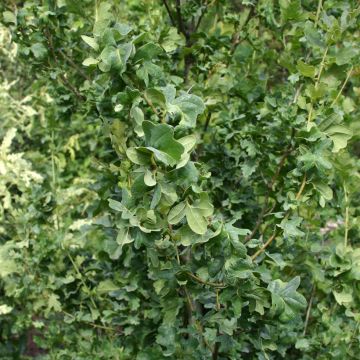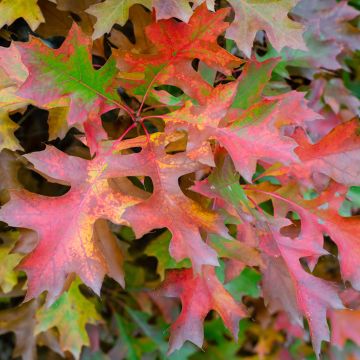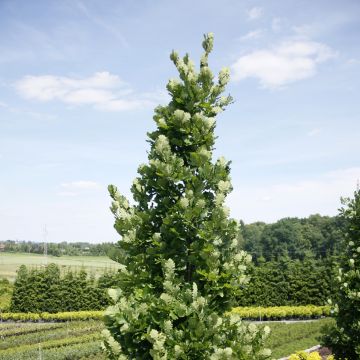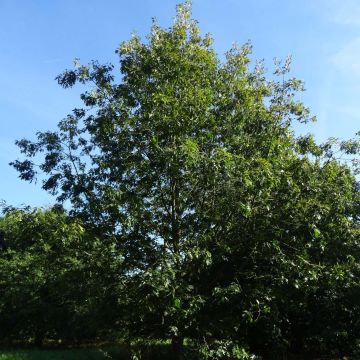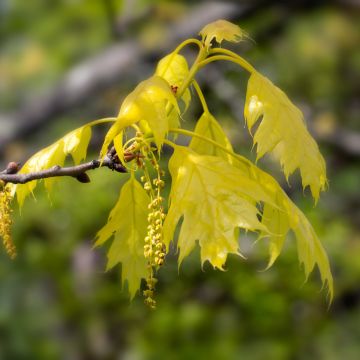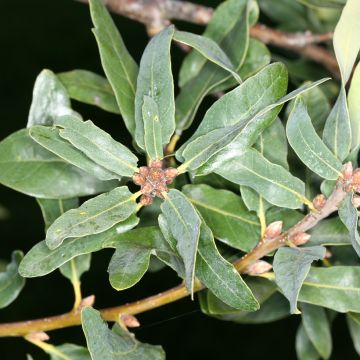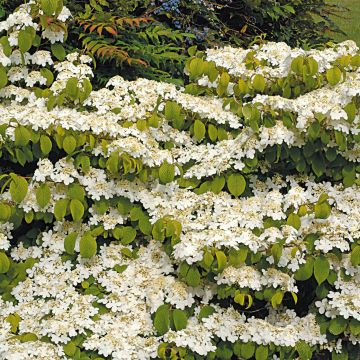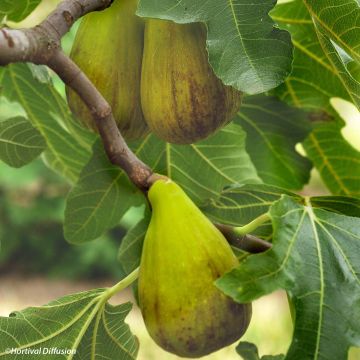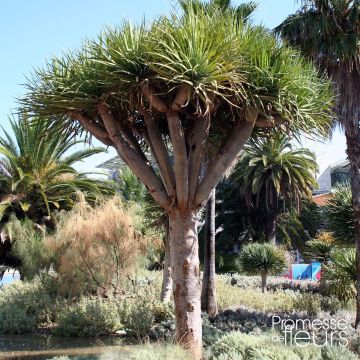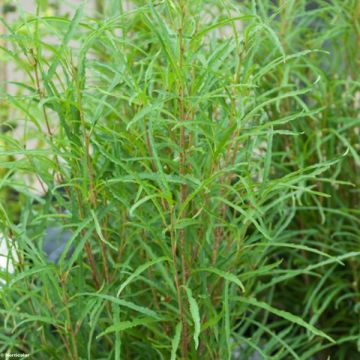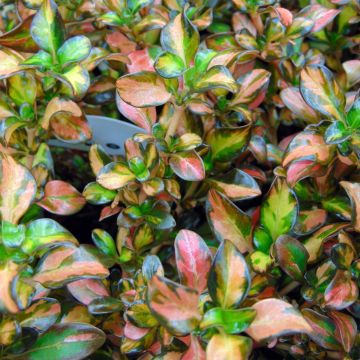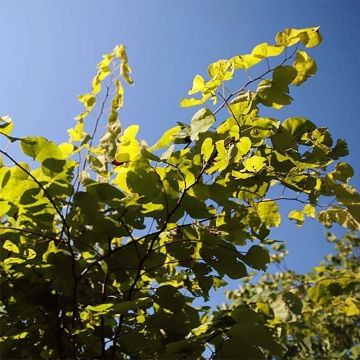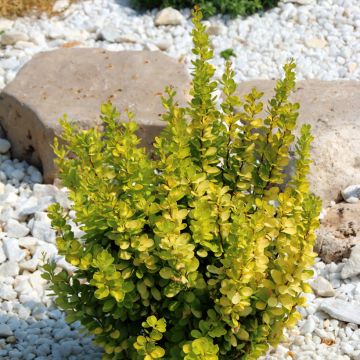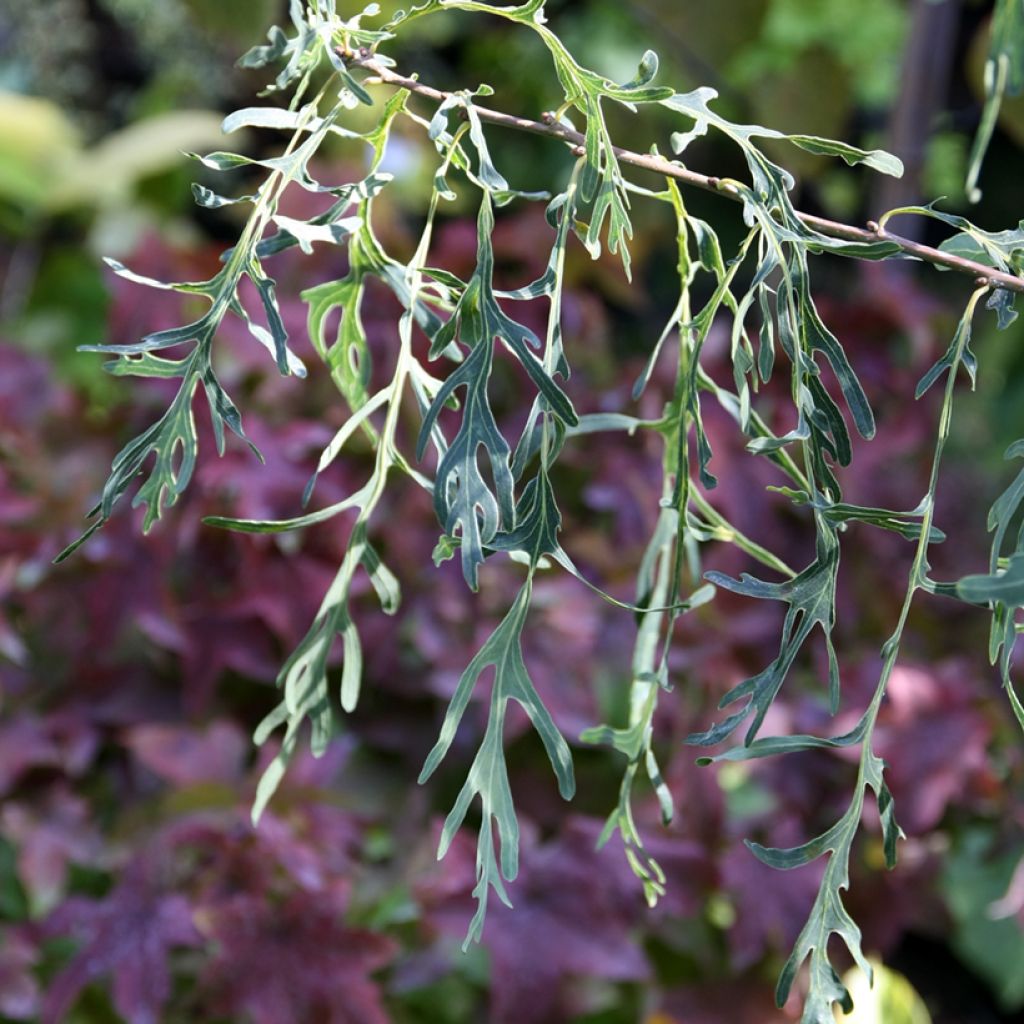

Quercus robur Posnania - English oak
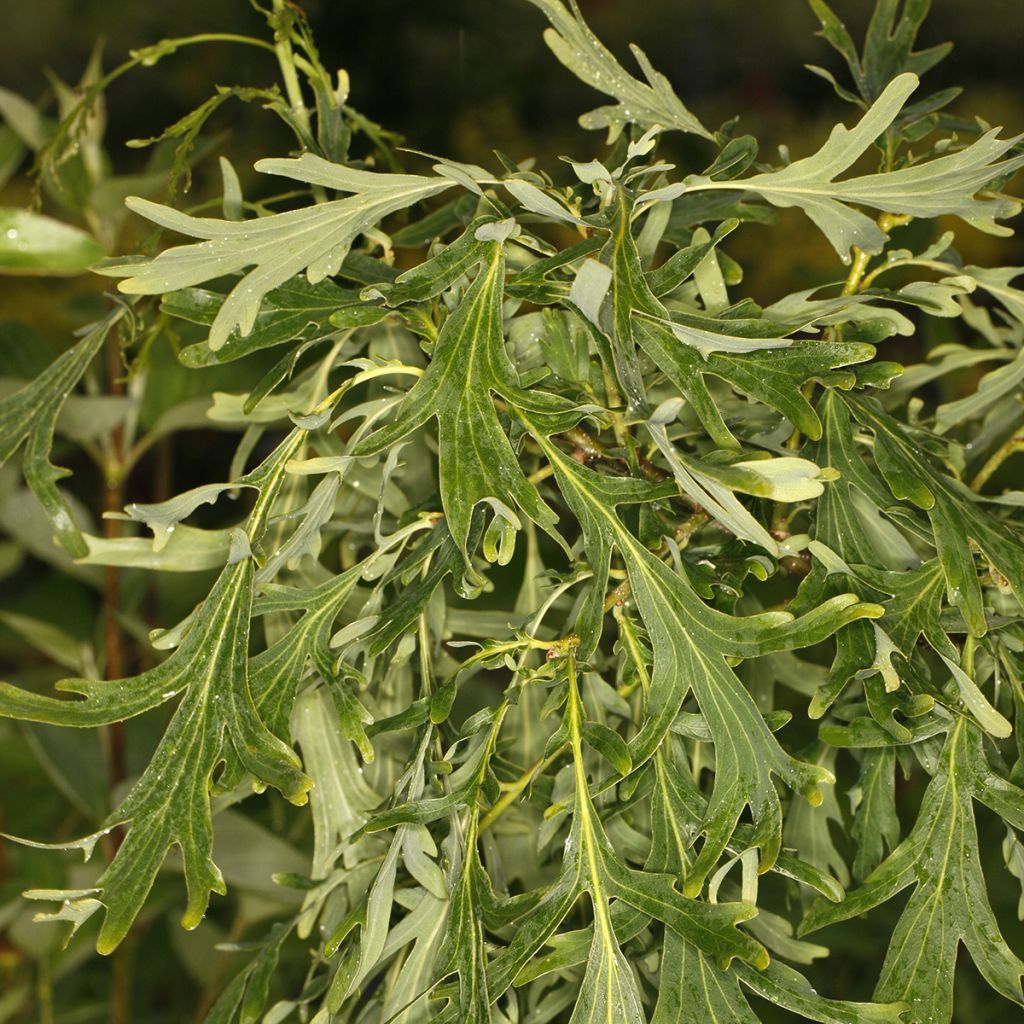

Quercus robur Posnania - English oak
Quercus robur Posnania - English oak
Quercus robur Posnania
English oak, Pedunculate oak
This item cannot be shipped to the selected country
Delivery charge from €5.90
More information
Schedule delivery date,
and select date in basket
This plant carries a 24 months recovery warranty
More information
We guarantee the quality of our plants for a full growing cycle, and will replace at our expense any plant that fails to recover under normal climatic and planting conditions.
From €5.90 for pickup delivery and €6.90 for home delivery
Express home delivery from €8.90.
Does this plant fit my garden?
Set up your Plantfit profile →
Description
Quercus robur 'Posnania' is a magnificent tree distinguished by the beauty of its foliage and elegant posture. This pedunculate oak, with its spreading and fairly dense crown, only reaches about ten metres in height, making it suitable for integration into many landscaping and urban designs. The charming and delicate, elongated leaves, cut into narrow strips, can reach up to 25 cm in length. Hanging down, they give this variety a distinctive appearance compared to other oaks. Resistant to frost, this highly decorative oak grows in most soils as long as they are sufficiently moist, as it does not tolerate drought, which slows its growth. When planting it in the garden, it is important to choose a clear location to admire it, as it then takes on the appearance of a beautiful, eye-catching specimen.
Quercus robur, commonly known as the pedunculate oak, can also be called the common oak, cluster oak, female oak, or gravelin, depending on the region. It is a tree from the beech family, along with beech and chestnut trees. In Latin, Quercus robur means "robust oak". It is native to a large part of temperate Europe. This venerable tree appreciates sub-oceanic to oceanic or continental climates, without excessive heat and relatively humid. In its natural habitat, it can reach a height of 50 m with a spread of 25 to 30 m, while its trunk can measure up to 2 m in diameter. With fairly exceptional longevity, this oak can live up to 2000 years according to some estimates.
The 'Posnania' cultivar was selected in 1998 by Ewa Jerzak, a Polish breeder. This variety is the result of natural selection from seeds of an English oak 'Laciniata' from the Botanical Garden of Adam Mickiewicz University in Poznań, Poland. It was introduced to the market in 2011 by Joanna and Bronisław Szmit nurseries, located in Pęchcin, north of Warsaw, and was awarded an "Honorable Mention" at the New Plant Competition of the "Green is Life" International Exhibition in Warsaw that same year. Quercus robur 'Posnania' can reach a height of 10 to 12 metres and a spread of 7 to 9 metres, with a dense, spreading, and drooping crown. The deciduous leaves are laciniated with 5 to 7 lobes and can measure up to 25 cm long. The pendulous leaves give this variety a weeping form. They are dark green on the upper side and grey on the underside, with yellowish veins, and then turn beautiful yellow hues in autumn. This pedunculate oak develops early, rather insignificant flowers in early spring, which then give way to elongated acorns measuring 2 to 3 cm in length, light brown when ripe. However, they are not very numerous on this variety. 'Posnania' has a deep root system, based on a taproot and a significant network of spreading roots, which gives it stability and good anchoring in the soil.
The pedunculate oak 'Posnania' is a remarkable specimen that grows freely, requiring sufficient space for its proper development. Thanks to its elegant appearance and original foliage, it brings a new and unique touch to your space. It is a robust tree that can withstand winter cold, withstanding temperatures down to -32°C. It grows faster in fertile and moderately moist soil. Alkaline limestone soils are not suitable for this tree species. It can be planted alone as a specimen to admire its stature or in groups to create a grove with dappled shade. It is also recommended in urban environments for large gardens, parks, streets, squares, and large lawns. Why not accompany the pedunculate oak 'Posnania' with trees with similar requirements such as maples, beech trees, ash trees, linden trees, or even sophora trees to bring diversity in form, colour, and architecture to a large space? Ground cover plants suitable for shaded conditions and slightly moist soils can also be planted at its base, such as Japanese spurge (Pachysandra terminalis), Algerian ivy (Hedera algeriensis Algerian Bellecour), Greater periwinkle (Vinca major), or lady fern (Athyrium filix-femina). Being well-suited for pruning, it is suitable for bonsai shaping.
Report an error about the product description
Plant habit
Flowering
Foliage
Botanical data
Quercus
robur
Posnania
Fagaceae
English oak, Pedunculate oak
Cultivar or hybrid
Other Oak
Planting and care
Plant your Quercus robur Posnania in autumn or spring, in ordinary but deep soil that remains moist at depth, preferably clayey, slightly chalky, neutral or slightly acidic. It prefers fertile and humus-bearing soils. Once established, this tree with deep roots can withstand normal summers and requires no watering. It appreciates moist but well-drained soils, where its growth will be faster. In poor and dry soils, its growth will be slowed down. It prefers very sunny and clear exposures, which promote remarkably colourful foliage. If necessary, create a drainage pit with stones if your soil is suffocating. If your soil is poor, adding leaf compost will be beneficial. Water regularly during the summer following planting and avoid prolonged droughts for another year. Mulching can help you keep the soil moist and space out watering. It is perfectly frost-resistant. Stake young plants and then let nature take its course. Pruning is unnecessary, except for young trees that do not grow in a balanced manner. In February, before the vegetation resumes, remove dead or diseased wood that affects the tree's habit. It is not very susceptible to diseases, only powdery mildew on its foliage.
Planting period
Intended location
Care
This item has not been reviewed yet - be the first to leave a review about it.
Striking foliage shrubs
Haven't found what you were looking for?
Hardiness is the lowest winter temperature a plant can endure without suffering serious damage or even dying. However, hardiness is affected by location (a sheltered area, such as a patio), protection (winter cover) and soil type (hardiness is improved by well-drained soil).

Photo Sharing Terms & Conditions
In order to encourage gardeners to interact and share their experiences, Promesse de fleurs offers various media enabling content to be uploaded onto its Site - in particular via the ‘Photo sharing’ module.
The User agrees to refrain from:
- Posting any content that is illegal, prejudicial, insulting, racist, inciteful to hatred, revisionist, contrary to public decency, that infringes on privacy or on the privacy rights of third parties, in particular the publicity rights of persons and goods, intellectual property rights, or the right to privacy.
- Submitting content on behalf of a third party;
- Impersonate the identity of a third party and/or publish any personal information about a third party;
In general, the User undertakes to refrain from any unethical behaviour.
All Content (in particular text, comments, files, images, photos, videos, creative works, etc.), which may be subject to property or intellectual property rights, image or other private rights, shall remain the property of the User, subject to the limited rights granted by the terms of the licence granted by Promesse de fleurs as stated below. Users are at liberty to publish or not to publish such Content on the Site, notably via the ‘Photo Sharing’ facility, and accept that this Content shall be made public and freely accessible, notably on the Internet.
Users further acknowledge, undertake to have ,and guarantee that they hold all necessary rights and permissions to publish such material on the Site, in particular with regard to the legislation in force pertaining to any privacy, property, intellectual property, image, or contractual rights, or rights of any other nature. By publishing such Content on the Site, Users acknowledge accepting full liability as publishers of the Content within the meaning of the law, and grant Promesse de fleurs, free of charge, an inclusive, worldwide licence for the said Content for the entire duration of its publication, including all reproduction, representation, up/downloading, displaying, performing, transmission, and storage rights.
Users also grant permission for their name to be linked to the Content and accept that this link may not always be made available.
By engaging in posting material, Users consent to their Content becoming automatically accessible on the Internet, in particular on other sites and/or blogs and/or web pages of the Promesse de fleurs site, including in particular social pages and the Promesse de fleurs catalogue.
Users may secure the removal of entrusted content free of charge by issuing a simple request via our contact form.
The flowering period indicated on our website applies to countries and regions located in USDA zone 8 (France, the United Kingdom, Ireland, the Netherlands, etc.)
It will vary according to where you live:
- In zones 9 to 10 (Italy, Spain, Greece, etc.), flowering will occur about 2 to 4 weeks earlier.
- In zones 6 to 7 (Germany, Poland, Slovenia, and lower mountainous regions), flowering will be delayed by 2 to 3 weeks.
- In zone 5 (Central Europe, Scandinavia), blooming will be delayed by 3 to 5 weeks.
In temperate climates, pruning of spring-flowering shrubs (forsythia, spireas, etc.) should be done just after flowering.
Pruning of summer-flowering shrubs (Indian Lilac, Perovskia, etc.) can be done in winter or spring.
In cold regions as well as with frost-sensitive plants, avoid pruning too early when severe frosts may still occur.
The planting period indicated on our website applies to countries and regions located in USDA zone 8 (France, United Kingdom, Ireland, Netherlands).
It will vary according to where you live:
- In Mediterranean zones (Marseille, Madrid, Milan, etc.), autumn and winter are the best planting periods.
- In continental zones (Strasbourg, Munich, Vienna, etc.), delay planting by 2 to 3 weeks in spring and bring it forward by 2 to 4 weeks in autumn.
- In mountainous regions (the Alps, Pyrenees, Carpathians, etc.), it is best to plant in late spring (May-June) or late summer (August-September).
The harvesting period indicated on our website applies to countries and regions in USDA zone 8 (France, England, Ireland, the Netherlands).
In colder areas (Scandinavia, Poland, Austria...) fruit and vegetable harvests are likely to be delayed by 3-4 weeks.
In warmer areas (Italy, Spain, Greece, etc.), harvesting will probably take place earlier, depending on weather conditions.
The sowing periods indicated on our website apply to countries and regions within USDA Zone 8 (France, UK, Ireland, Netherlands).
In colder areas (Scandinavia, Poland, Austria...), delay any outdoor sowing by 3-4 weeks, or sow under glass.
In warmer climes (Italy, Spain, Greece, etc.), bring outdoor sowing forward by a few weeks.

































